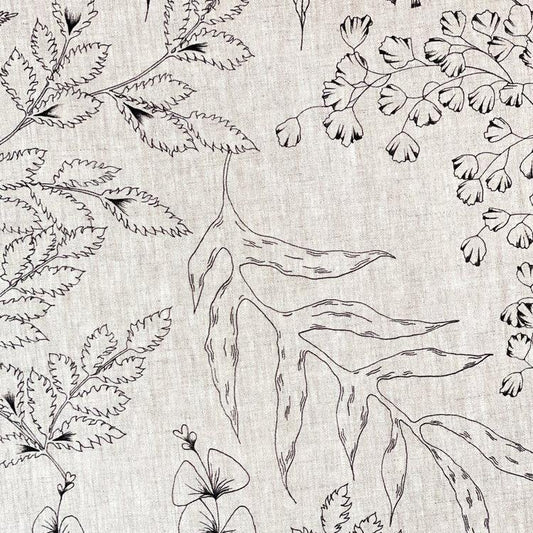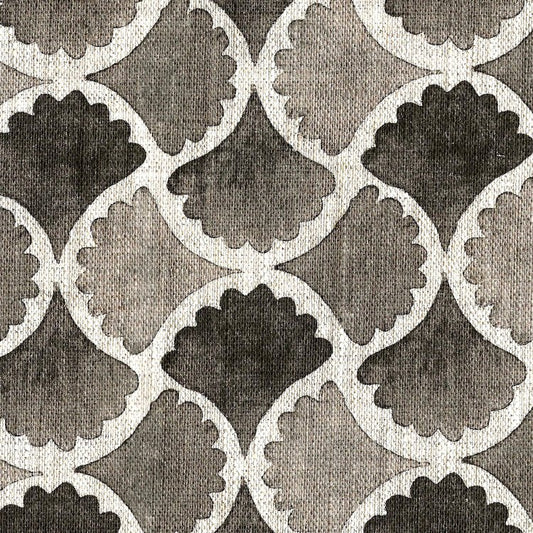Investing in luxury, eco-friendly fabrics like 100% linen for your interiors brings both elegance and a commitment to sustainability into your space. Linen is a highly durable, biodegradable, and stylish choice that, with proper care, can last for many years, enhancing your home’s natural beauty. However, as with all natural materials, it requires thoughtful maintenance to preserve its quality and appearance.
This blog will offer practical advice on caring for 100% linen, with tips on eco-friendly cleaning and maintenance practices that keep your fabrics looking stunning while also respecting the environment.


Understanding Linen: Why Proper Care Matters
Linen is known for its durability, breathability, and unique texture, which only improves with age—if treated right. Derived from the flax plant, linen is one of the most sustainable fabric options, requiring less water and fewer pesticides than other textiles. It’s naturally resistant to wear and becomes softer and more comfortable over time. However, linen’s natural fibres and the inks used to print on the linen can be sensitive to harsh detergents, high heat, and abrasive washing techniques, which can lead to shrinking, fading, or weakening of the fabric.
1. Daily Care and Preventive Maintenance
To keep your linen looking beautiful in between cleanings, a few simple habits can go a long way:
- Dust or Vacuum Regularly: For upholstery or decorative cushions, gently dust or vacuum your linen fabric weekly to remove dirt and prevent particles from embedding in the fibres.
- Avoid Direct Sunlight: Prolonged exposure to direct sunlight can cause linen to fade or weaken over time. Try to position linen furnishings out of direct sunlight. Lining your curtains and blinds with good quality or blackout linings can help preserve the fabric’s colour and strength.
- Rotate and Fluff: If your linen fabric is used on cushions or pillows, rotate and fluff them regularly to keep the fibres even and reduce wear in one spot.
2. Eco-Friendly Cleaning for 100% Linen Fabrics
Maintaining linen doesn’t require harsh chemicals. In fact, a more gentle, eco-conscious approach is ideal for both the fabric and the environment. In general, I would advise not to wash your linen products but if you need to, here’s how to keep your linen fresh and clean with sustainable cleaning methods:
- Cold or Lukewarm Water: When washing linen, always use cold or lukewarm water, as hot water can weaken the natural fibres and lead to shrinkage.
- Choose a Natural, Mild Detergent: Opt for plant-based, biodegradable detergents free from artificial fragrances and harsh chemicals. These gentle detergents help preserve the natural quality of linen without leaving any harmful residues on the fabric or in the environment.
- Avoid Fabric Softeners: Fabric softeners leave a coating on linen that diminishes its natural breathability and can make the fabric feel stiff over time. Instead, add a splash of white vinegar to the rinse cycle to naturally soften the linen without synthetic additives.
- Spot Clean When Possible: If there’s a spill or stain, spot cleaning is the best first step to avoid unnecessary washes. Use a mixture of mild detergent and water, and dab the stain gently with a clean cloth, avoiding vigorous scrubbing that can damage the fibres.
3. Washing and Drying Linen: The Eco-Friendly Way
If you need to wash your linen fabric more thoroughly, here’s the best way to do it:
- Hand Washing or Gentle Machine Cycle: For delicate linen fabrics, hand washing is often the best approach. If using a washing machine, place the linen item in a mesh laundry bag and select a gentle or delicate cycle. This helps prevent excessive friction that can cause wear or pilling.
- Air Dry or Low-Heat Tumble Dry: Linen dries quickly, so air drying is ideal. If possible, lay the fabric flat to dry, as hanging may stretch out some linen pieces. If you need to use a dryer, select a low-heat setting, remove the fabric while it’s still slightly damp, and smooth out any wrinkles by hand.
- Ironing for a Polished Look: Linen has a naturally textured look, but if you prefer a crisp appearance, iron your linen while it’s slightly damp on a low setting. Avoid using direct heat on the fabric; instead, place a clean cloth over the linen to protect it, or use a steam iron.
Each piece in my fabric collection is designed to bring the beauty of natural elegance into your home. With the right care, these fabrics will maintain their luxury appeal for years to come.
Caring for luxury, eco-friendly fabrics like linen is an investment in both beauty and sustainability. By following these simple but effective care practices, you’ll extend the life of your linen pieces while also minimizing environmental impact. Linen’s natural elegance and durability make it a worthwhile addition to any home, and with mindful maintenance, it will continue to be a stylish and sustainable choice for years to come.
Eleanor x






